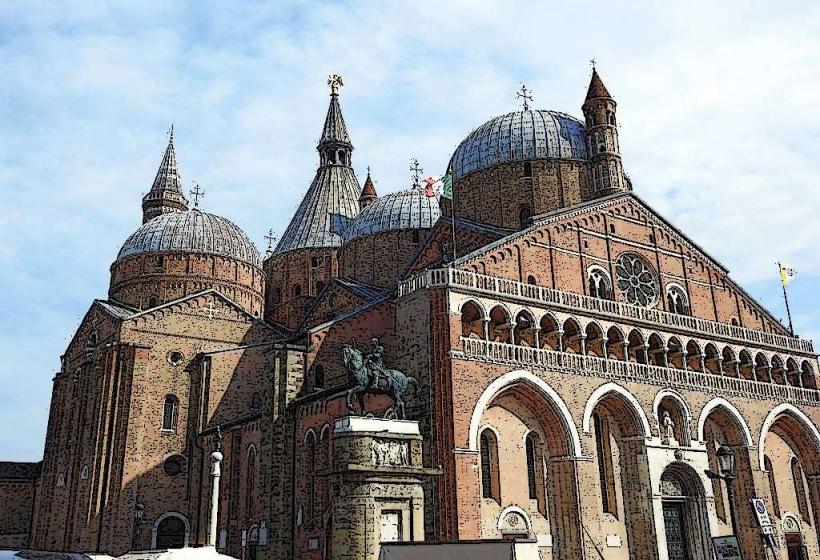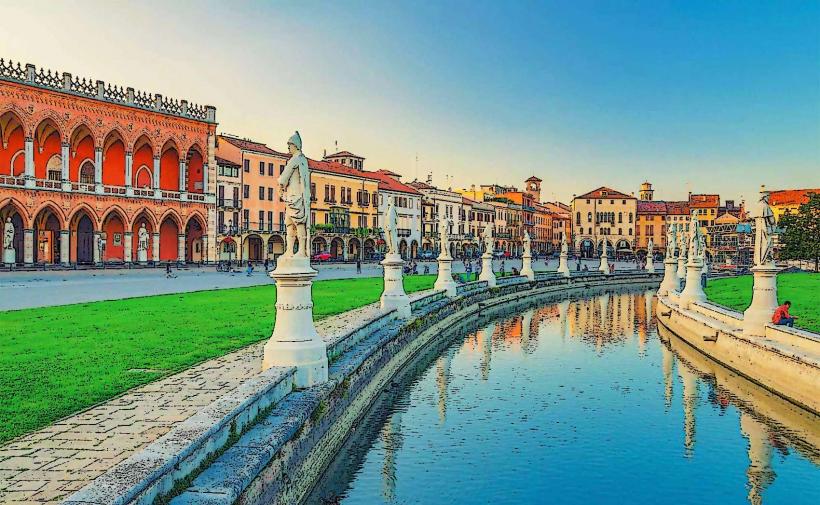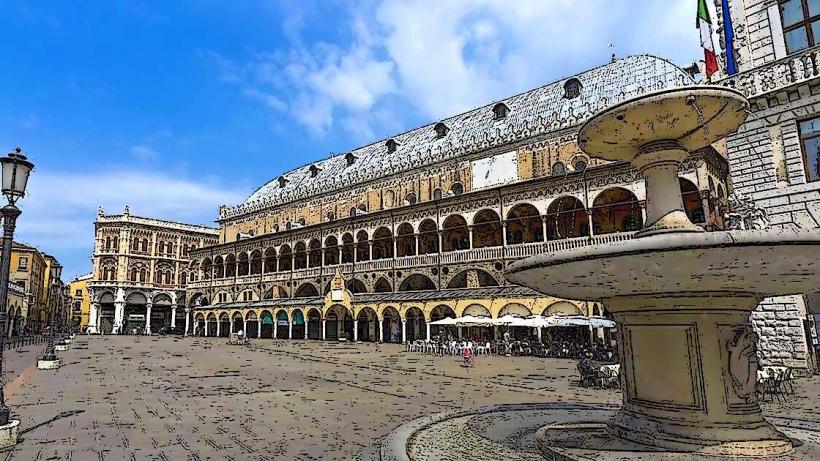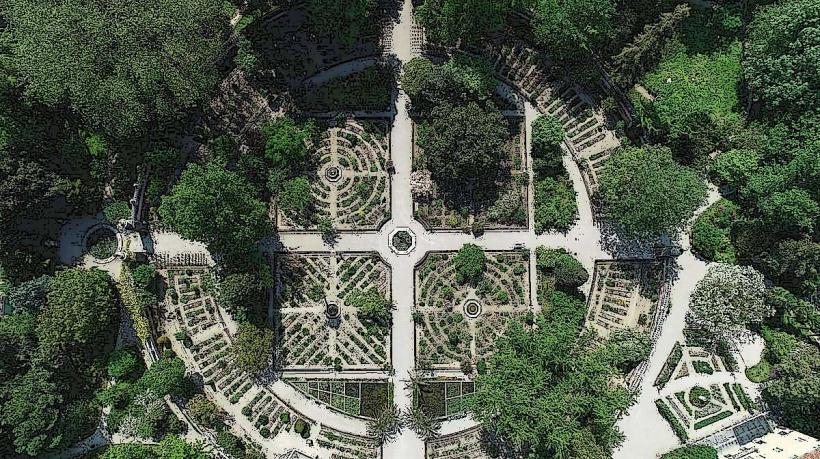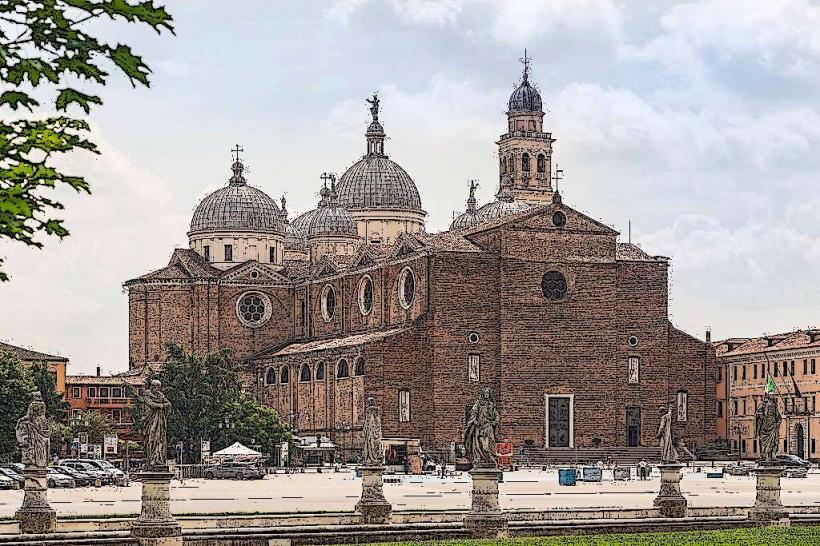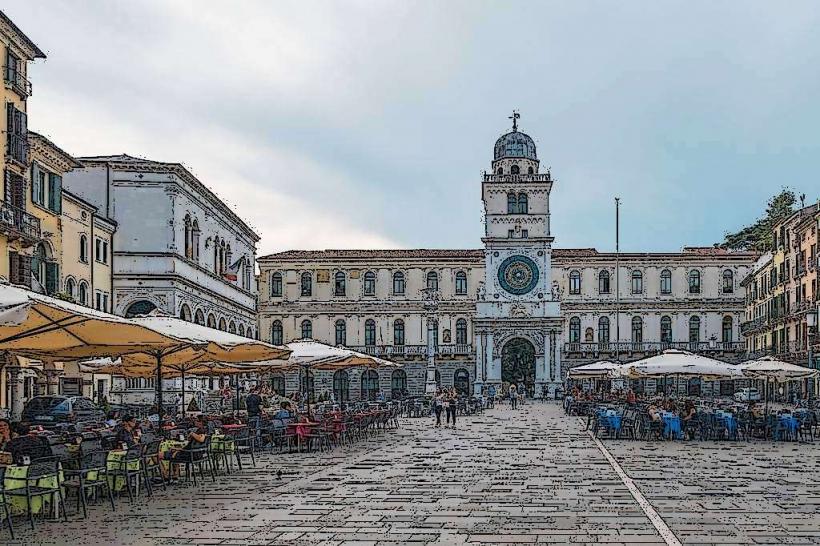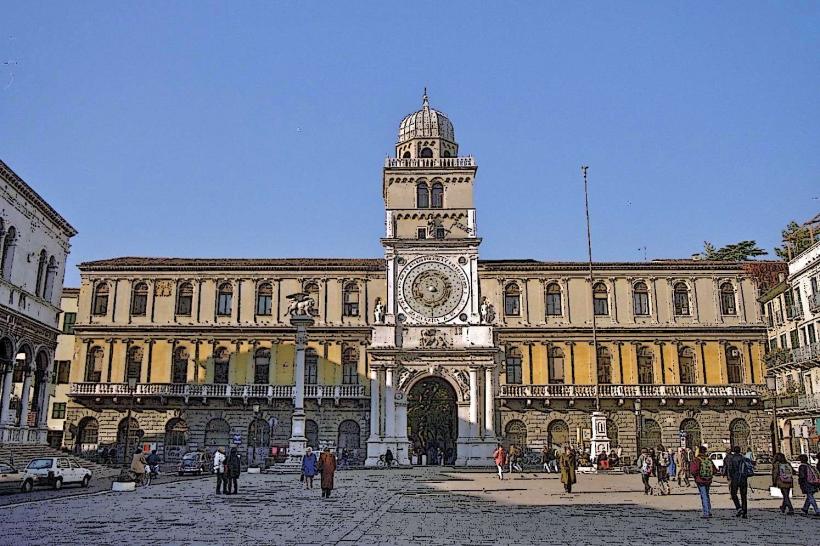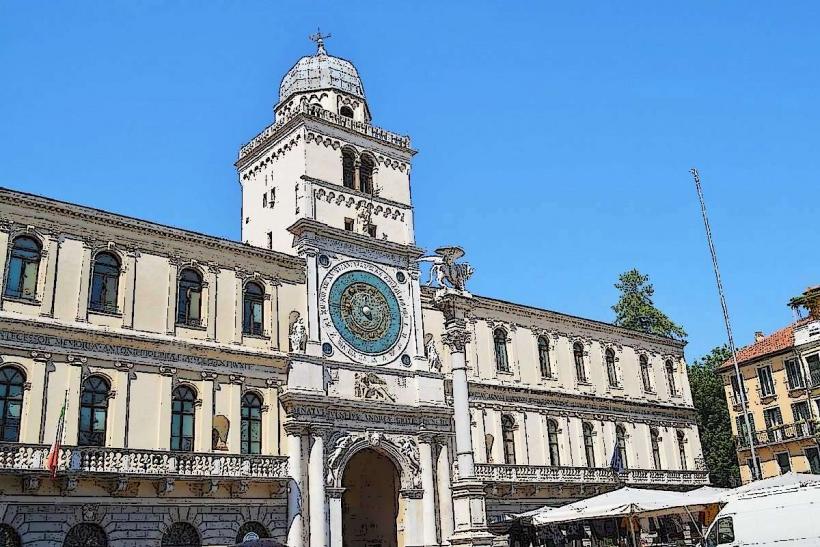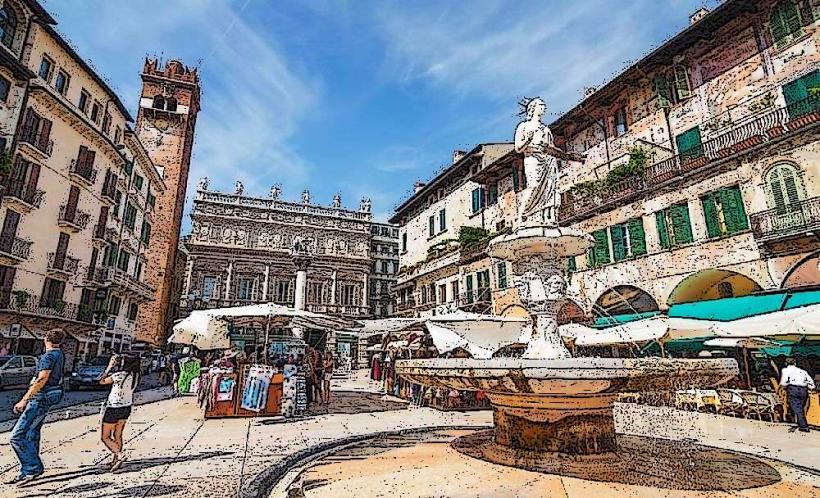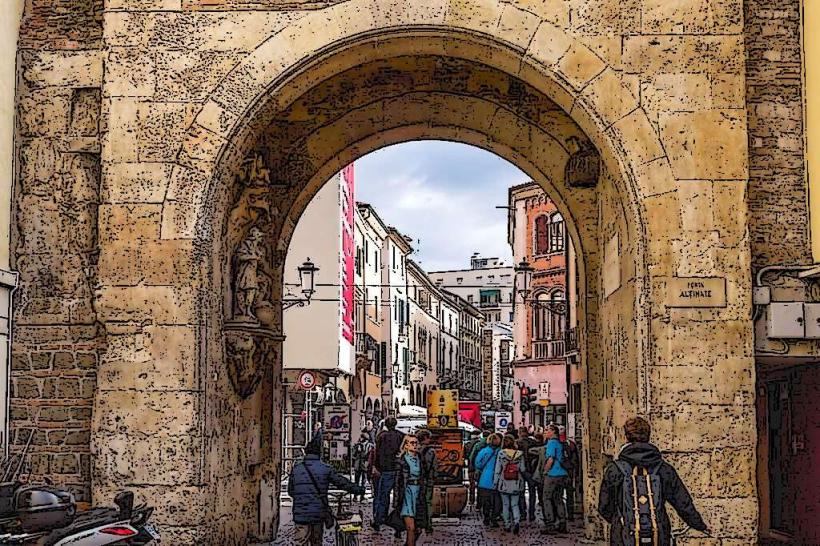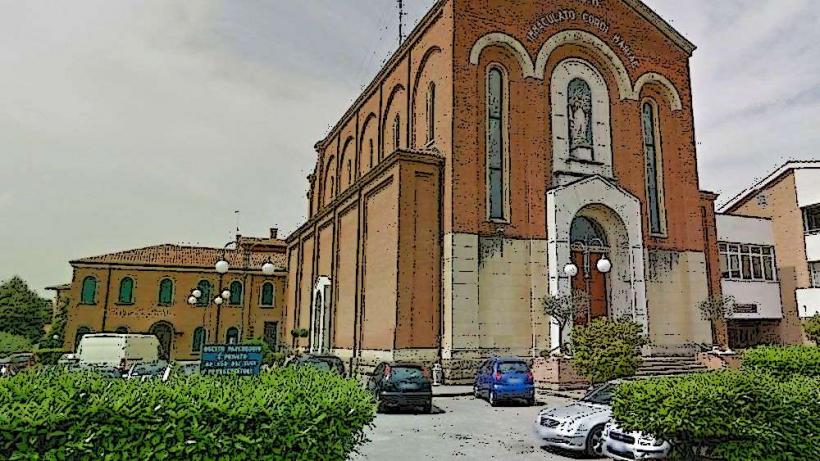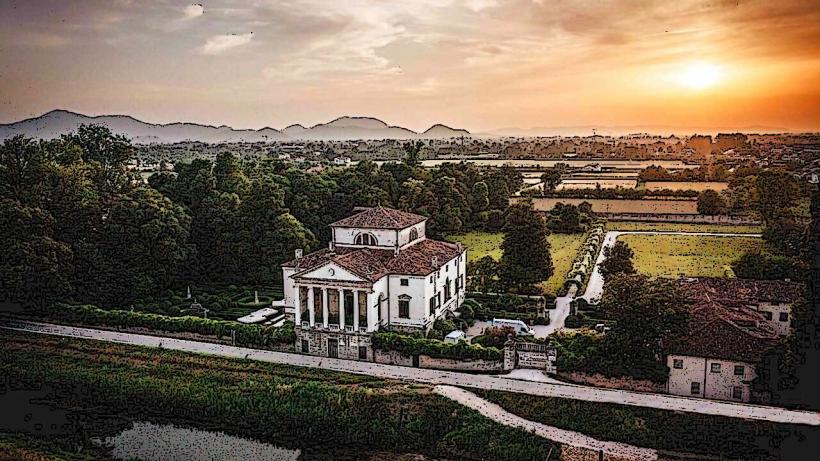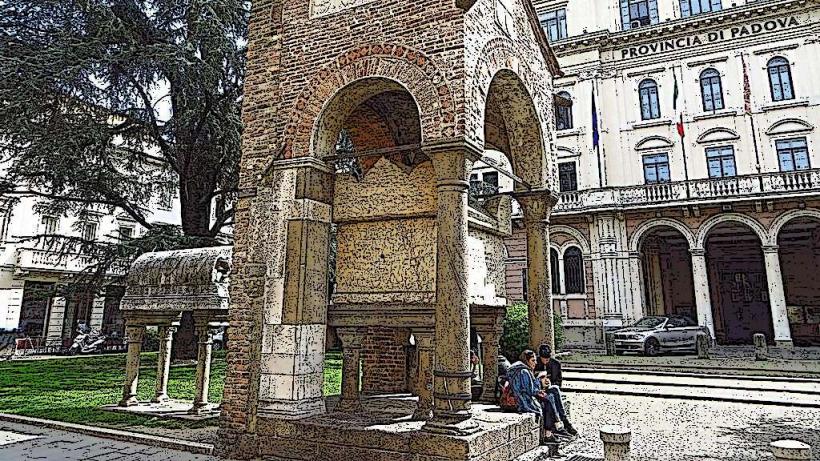Information
Landmark: Cappella degli ScrovegniCity: Padua
Country: Italy
Continent: Europe
Cappella degli Scrovegni, Padua, Italy, Europe
Overview
In Padua, the Scrovegni Chapel-known in Italian as the Cappella degli Scrovegni-stands as one of Italy’s greatest artistic treasures, its walls alive with Giotto’s luminous early 14th‑century frescoes, where deep blues still seem to breathe, and many regard it as one of Western art’s greatest masterpieces, a area that shaped the course of Renaissance painting, its colors still glowing after centuries.Around 1300, Enrico Scrovegni-a wealthy banker from Padua-commissioned the chapel, leaving his mark in stone and fresco, at the same time the Scrovegni family built it as their private chapel, dedicating it to Saint Mary of the Annunciation.Enrico Scrovegni commissioned the work for reasons that were both deeply personal and rooted in faith, while he tried to make amends for the high-interest lending his family had been accused of-a sin the Church condemned as harshly as stealing bread from the poor.The family built the chapel as an act of penance, hoping to find spiritual redemption, and inside, Giotto di Bondone covered the walls with a brilliant cycle of frescoes that still glow with deep blues and gold, not only that vivid frescoes spill across the chapel’s walls and ceiling, showing moments from the Life of Christ and the Virgin Mary, from a manger’s glow to a crown of thorns.Giotto’s work in the Scrovegni Chapel marks a turning point in European art, breaking away from the rigid Byzantine style to bring warmth, depth, and human emotion to sacred scenes, besides the frescoes unfold in three main cycles: the Life of the Virgin Mary, from her birth to her assumption into heaven; the Life of Christ, with moments like the Annunciation, Nativity, Crucifixion, and Resurrection; and the Last Judgment, a vast west-wall scene where the blessed and the damned face their fate.His use of space feels almost architectural, while the faces-eyes lifted, brows furrowed-carry a startling realism for their time, equally important this marked a break from the flat, symbolic style typical of medieval art, and the frescoes burst with rich reds and shafts of sunlight that make the walls seem to push outward into real space.Giotto’s gift for telling a story with vivid clarity and deep feeling marked a turning point in Renaissance art, and his Life of Christ and Life of the Virgin cycles brim with theological meaning, offering viewers a painted glimpse into the core of Christian belief, meanwhile giotto arranges the chapel’s scenes with precision, leading the eye step by step from the Annunciation to the Crucifixion and Resurrection.On the west wall, The Last Judgment bursts across the whole surface, showing Christ towering above as He weighs the fate of every soul, what’s more the saved rise toward heaven, light on their faces, while the damned tumble screaming into the shadowy fires below, sort of In a way, This scene quietly underscores the need for salvation, at the same time the chapel is slight, its plain rectangular floor plan framed by whitewashed walls.As it turns out, The chapel’s Gothic design shows in its pointed arches and slender windows, where pale gold light spills across the walls, furthermore that clean, uncluttered structure draws your eyes straight to Giotto’s vivid narrative frescoes.In the 1990s, the Scrovegni Chapel underwent careful restoration to shield those fragile pigments and upgrade climate controls, guarding them from heat, moisture, and dust, moreover as part of the restoration, workers installed a sophisticated climate-control system to shield the frescoes from damp air and city grime, kind of Now, visitors step through a cool, glass-walled vestibule before seeing the paintings at their best, while soft, focused lights wash over Giotto’s frescoes, pulling out the jewel-like blues and the delicate folds of each painted robe.The Scrovegni Chapel and its artwork are recognized as a UNESCO World Heritage Site for their extraordinary artistic and cultural value, while widely regarded as a cornerstone of early Renaissance art and a pivotal moment in Western art’s development, the work greets visitors to the Scrovegni Chapel after a short talk on the chapel’s history and the vivid frescoes waiting beyond its doors.As it happens, Because the artwork is so delicate, visitors can spend only a short time inside the chapel, protecting it from light and shifting temperatures, simultaneously the chapel sits within a larger museum complex that also includes the Museo Civico di Padova, home to paintings, sculptures, and archaeological pieces tied to the city’s past.For art lovers, history buffs, and pilgrims alike, the Scrovegni Chapel is a must-detect in Padua, equally important giotto’s frescoes rank among the Renaissance’s greatest works, capturing raw emotion and lifelike detail-like the grief etched on a mourner’s face-in every sacred scene.The chapel draws you in with its beauty and quiet reverence, standing as a living reminder of the city’s deep cultural roots and layered history.
Author: Tourist Landmarks
Date: 2025-08-19

